Traditional malting in Morgedal
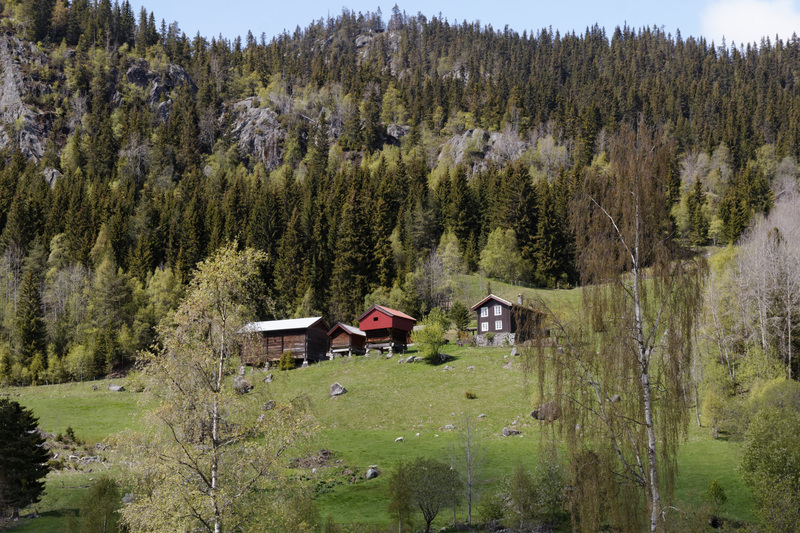
Kleiv, an old farm in Morgedal |
The guys I visited in Morgedal were definitely brewing traditional farmhouse beer, but they bought the malts. I'd read a lot about the old techniques for malting, but hardly ever seen any of the old malting equipment. So before going to Telemark I'd tried calling various museums to see if they had anything I could look at. That didn't really lead to anything, and I told Terje and Halvor about how disappointed I was. Terje then offered to show me his malt house, because there's one still standing on his farm.
In one of the breaks in the brewing we walked down to his farm. One of the buildings on his farm has been dated to the 17th century with dendrochronology. The malt house is not dated, but he thinks it's either 17th century or 18th century. It stands on the edge of the forest, a little away from the other houses. This is because malting could easily cause fires, and so isolating the malt house reduced the risk of the fire spreading.
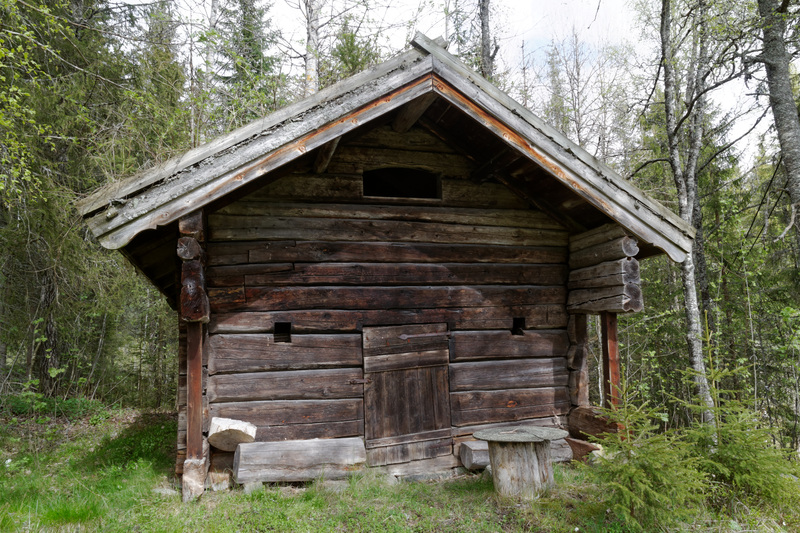
Terje's malt house |
Traditionally, nearly everyone in Norway would make their own malts. Some places along the coast and in the far north people might buy the malts, but in general people made malts from their own barley (or oats). There were so many drying techniques that the subject could easily fill an entire book. One 1930s survey lists no less than 25 types of malt drying equipment, but the list could have been longer.
The most common method was to dry the malts in the "badstu" (which literally means "bath house"). Originally, this was a house used for multiple purposes, one of which was as a sauna. In the Middle Ages the custom was for the entire household to undress in the main house and walk naked to the sauna. Needless to say, the catholic church did not approve of this, and eventually managed to abolish the custom. At a guess, this would have been in the 15th and 16th centuries. (The reason Finland is famous for their sauna today is that unlike the other Nordic countries they preserved the bath house custom.)
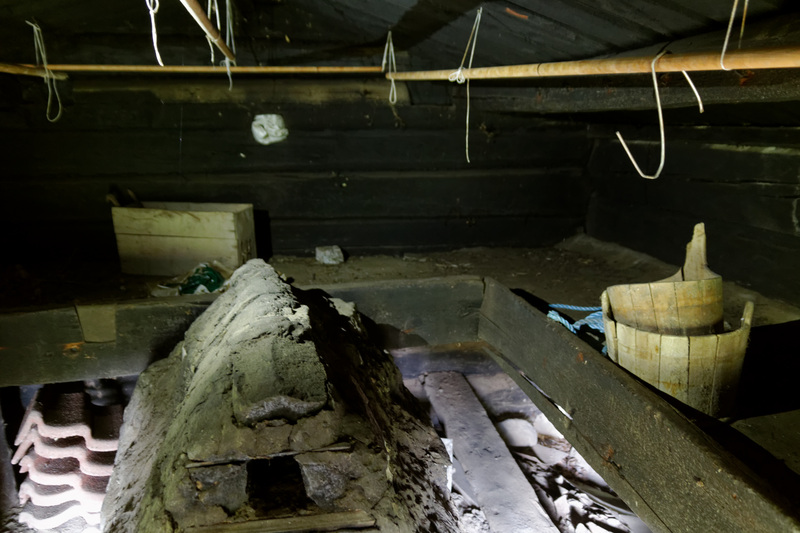
Inside the malt house |
Inside the malt house is a primitive stone oven and along the walls wooden shelves for the malts. Set into the edge of the shelves is a little piece of wood that can be taken out, making it easier to scoop the malts out. The oven has no pipe, so the smoke would spread in the house and add flavour to the malts. The walls have holes that could be closed with blocks of wood to keep the heat in, and opened to let the worst of the smoke out.
This drying method will produce malts that have some level of smoke flavour. I've tried beer made with this type of malts once, and while it was smoky, it was just lightly smoked. Some sources claim you can adjust the intensity of the smoke flavour by how much you air the house. When Aslak (a nearby neighbour) revived the local brewing scene he chose not to make his malts in the badstu, because he didn't like the smoke aroma. So he built a wooden frame with a bottom of wire mesh, and used a fan to blow hot air instead.
Morgedal is pretty high up (the malt house stands at 436 meters above sea level), so I asked Terje if people really had grown barley up here. He said that his parents-in-law, who ran the farm before his time, had grown barley, but "it was just pure chance whether anything actually ripened." So very likely farmers up here on the edge of the mountains would have been forced to buy their malts in bad years.
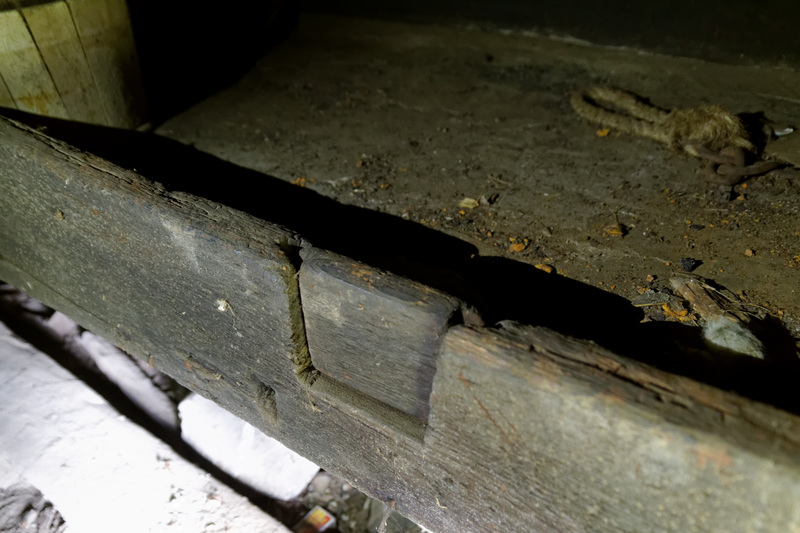
The little "gate" for scooping the malts out |
The local malts from Stjørdalen and Lithuania are extremely interesting, since they give the beers from these areas flavours that don't exist anywhere else. The Lithuanians have used these flavours (together with brewing techniques, yeast, etc) to create multiple styles that are uniquely their own, and I can't help thinking that with Norwegian barley and all these malting techniques that we've now forgotten, Norway could do the same. And the malting methods are not all forgotten, because along the west coast there are still people who know how to make malts with traditional methods like sun-drying.
The last commercial Norwegian maltery was closed by Ringnes in 1986. Today, the only people who regularly produce their own malt is the farmhouse brewers in Oppdal, Stjørdalen, and the areas around. However, there are now a whole range of initiatives to start producing malts from Norwegian barley again. One of the first, surprisingly, was Østlandets Gull, a pale lager from macro brewer Borg. However, all of these make the malts using the normal, commercial foreign methods. That's probably why the flavours wind up being not that interesting.

Østlandets Gull |
By contrast, Alstadberger, Morten Granås's beer, and the beer from Storli Gård were all extremely interesting, and very good. Part of that was due to the farmhouse technique, but even more it was about the malts and the techniques that were used to produce it. I can't help but feel that if Norway now starts producing malts from Norwegian barley using the same methods as everybody else we'll be missing out on a large part of the potential in having Norwegian malts.
Happily, there are two exceptions. Klostergården is building a big malt house in the traditional Stjørdal style, and Voss Bryggeri is also planning to revive traditional malting techniques. Following these developments is going to be extremely interesting.
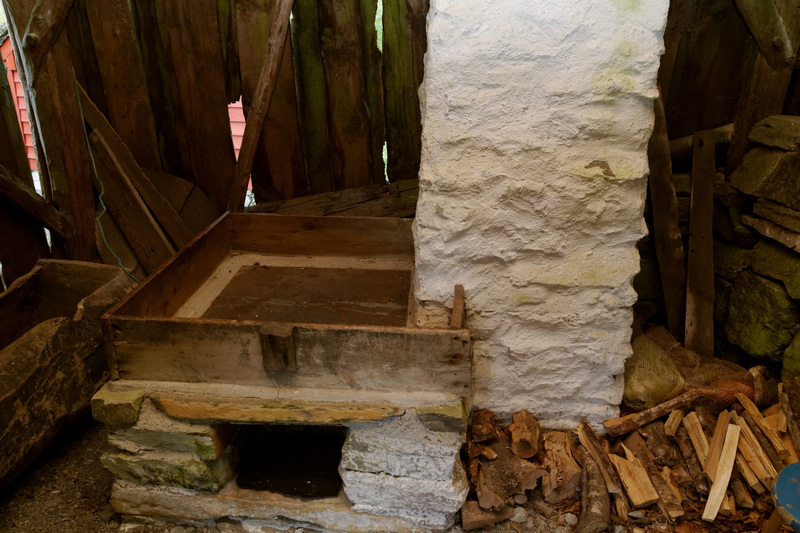
Malt drying frame, Nordfjord Museum, Sandane |
Similar posts
Gotlandsdricke - an overview
A lot has been written on Gotlandsdricka, but the writers generally call it "an ancient beer" or "indigenous beer" and variations on that theme
Read | 2017-01-08 13:24
A maltster on Gotland
While on holiday on Gotland I saw a note on a poster about an open farm and something about malt being made
Read | 2017-01-01 14:02
Norwegian farmhouse ale styles
People are confused over what to call Norwegian farmhouse ale and what styles there are
Read | 2017-01-19 19:23
Comments
Pamela Eberhardt Jackson - 2015-12-03 14:39:30
I found this article interesting as I have a large picture of the Kleiv farm. This is the birth place of my Great Uncle Halvor Kleiv's father..I assume he was one of the two brothers that immigrated to the U.S...hopefully my husband and I will make a trip to Norway in the near future and will definitely visit the farm.
Pamela Jackson